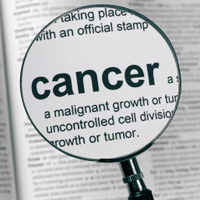Age above 70 years and Charlson Comorbidity Index higher than 3 are associated with reduced survival probabilities after radical cystectomy for bladder cancer. Data from a contemporary series of 334 consecutive patients

Accepted: December 7, 2020
All claims expressed in this article are solely those of the authors and do not necessarily represent those of their affiliated organizations, or those of the publisher, the editors and the reviewers. Any product that may be evaluated in this article or claim that may be made by its manufacturer is not guaranteed or endorsed by the publisher.
Objective: To assess the joint effect of age and comorbidities on clinical outcomes of radical cystectomy (RC).
Methods: 334 consecutive patients undergoing open RC for bladder cancer (BC) during the years 2005-2015 were analyzed. Pre-, peri- and post-operative parameters, including age at RC (ARC) and Charlson Comorbidity Index (CCI), were evaluated. Overall and cancer-specific survivals (OS, CSS) were assessed by univariate and multivariate modelling. Furthermore, a three-knot restricted cubic spline (RCS) was fitted to survival data to detect dependency between death-rate ratio (HR) and ARC.
Results: Median follow-up time was 3.8 years (IQR = 1.3-7.5) while median OS was 5.9 years (95%CL = 3.8-9.1). Globally, 180 patients died in our cohort (53.8%), 112 of which (62.2%) from BC and 68 patients (37.8%) for unrelated causes. After adjusting for preoperative, pathological and perioperative parameters, patients with CCI > 3 showed significantly higher death rates (HR = 1.61; p = 0.022). The highest death rate was recorded in ARC = 71-76 years (HR = 2.25; p = 0.034). After fitting an RCS to both OS and CSS rates, two overlapping nonlinear trends, with common highest risk values included in ARC = 70-75 years, were observed.
Conclusions: Age over 70 years and CCI > 3 were significant factors limiting the survival of RC and should both be considered when comparing current RC outcomes.
Jue JS, Koru-Sengul T, Miao F, et al. Neoadjuvant vs adjuvant chemotherapy for muscle-invasive bladder cancer: a propensity matched analysis. Minerva Urol Nefrol. 2020 Jan 30.
Capece M, Spirito L, La Rocca R, et al. Hexaminolevulinate blue light cystoscopy (Hal) assisted transurethral resection of the bladder tumour vs white light transurethral resection of the bladder tumour in non-muscle invasive bladder cancer (NMIBC): a retrospective analysis. Arch Ital Urol Androl. 2020; 92:17-20. DOI: https://doi.org/10.4081/aiua.2020.1.17
Mantica G, Simonato A, Du Plessis DE, et al. The pathologist's role in the detection of rare variants of bladder cancer and analysis of the impact on incidence and type detection. Minerva Urol Nefrol. 2018; 70:594-597. DOI: https://doi.org/10.23736/S0393-2249.18.03175-2
Stein JP, Lieskovsky G, Cote R, et al. Radical cystectomy in the treatment of invasive bladder cancer: long-term results in 1,054 patients. J Clin Oncol. 2001; 19:666-75. DOI: https://doi.org/10.1200/JCO.2001.19.3.666
Madersbacher S, Hochreiter W, Burkhard F, et al. Radical cystectomy for bladder cancer today - a homogeneous series without neoadjuvant therapy. J Clin Oncol. 2003; 21:690-6. DOI: https://doi.org/10.1200/JCO.2003.05.101
Hautmann RE, Gschwend JE, de Petriconi RC, et al. Cystectomy for transitional cell carcinoma of the bladder: results of a surgery only series in the neobladder era. J Urol. 2006; 176:486-92 DOI: https://doi.org/10.1016/j.juro.2006.03.038
Dy GW, Gore JL, Forouzanfar MH, et al. Global burden of urologic cancers, 1990-2013. Eur Urol. 2017; 71:437-446. DOI: https://doi.org/10.1016/j.eururo.2016.10.008
Valderas JM, Starfield B, Sibbald B, et al. Defining comorbidity: implications for understanding health and health services. Ann Fam Med. 2009; 7:357-63. DOI: https://doi.org/10.1370/afm.983
Sgrò P, Sansone M, Sansone A, et al. Physical exercise, nutrition and hormones: three pillars to fight sarcopenia. Aging Male. 2019;22:75-88. DOI: https://doi.org/10.1080/13685538.2018.1439004
Dindo D, Demartines N, Clavien PA. Classification of surgical complications: a new proposal with evaluation in a cohort of 6336 patients and results of a survey. Ann Surg. 2004; 240:205-13. DOI: https://doi.org/10.1097/01.sla.0000133083.54934.ae
Marubini E, Valsecchi MG. Analyzing survival data from clinical trials and observational studies. John Wiley and Sons, New York, 1995.
Harrell FE Jr. Regression Modelling Strategies. 2nd Ed. New York, Springer Verlag, 2015.
Clark PE, Stein JP, Groshen SG, et al. Radical cystectomy in the elderly: comparison of clinical outcomes between younger and older patients. Cancer. 2005; 104:36-43. DOI: https://doi.org/10.1002/cncr.21126
Nielsen ME, Shariat SF, Karakiewicz PI, et al. Advanced age is associated with poorer bladder cancer-specific survival in patients treated with radical cystectomy. Eur Urol. 2007; 51:699-706. DOI: https://doi.org/10.1016/j.eururo.2006.11.004
Donat SM, Siegrist T, Cronin A, et al. Radical cystectomy in octogenarians--does morbidity outweigh the potential survival benefits? J Urol. 2010; 183:2171-7. DOI: https://doi.org/10.1016/j.juro.2010.02.015
Chromecki TF, Mauermann J, Cha EK, et al. Multicenter validation of the prognostic value of patient age in patients treated with radical cystectomy. World J Urol. 2012; 30:753-759. DOI: https://doi.org/10.1007/s00345-011-0772-2
Fonteyne V, Ost P, Bellmunt J, et al. Curative treatment for muscle invasive bladder cancer in elderly patients: a systematic review. Eur Urol. 2018; 73:40-50. DOI: https://doi.org/10.1016/j.eururo.2017.03.019
Megwalu II, Vlahiotis A, Radwan M, et al. Prognostic impact of comorbidity in patients with bladder cancer. Eur Urol. 2008;53:581-9. DOI: https://doi.org/10.1016/j.eururo.2007.10.069
Fairey AS, Jacobsen NE, Chetner MP, et al. Associations between comorbidity, and overall survival and bladder cancer specific survival after radical cystectomy: results from the Alberta Urology Institute Radical Cystectomy database. J Urol. 2009;182:85-92. DOI: https://doi.org/10.1016/j.juro.2008.11.111
Koppie TM, Serio AM, Vickers AJ, et al. Age-adjusted Charlson comorbidity score is associated with treatment decisions and clinical outcomes for patients undergoing radical cystectomy for bladder cancer. Cancer. 2008; 112:2384-92. DOI: https://doi.org/10.1002/cncr.23462
Mayr R, May M, Martini T, et al. Comorbidity and performance indices as predictors of cancer-independent mortality but not of cancer-specific mortality after radical cystectomy for urothelial carcinoma of the bladder. Eur Urol. 2012; 62:662-70. DOI: https://doi.org/10.1016/j.eururo.2012.03.057
D'Andrea D, Soria F, Zehetmayer S, et al. Comparative effectiveness of radical cystectomy and radiotherapy without chemotherapy in frail patients with bladder cancer (published online ahead of print) Scand J Urol. 2020; 54:52-57. DOI: https://doi.org/10.1080/21681805.2019.1711160
PAGEPress has chosen to apply the Creative Commons Attribution NonCommercial 4.0 International License (CC BY-NC 4.0) to all manuscripts to be published.


 https://doi.org/10.4081/aiua.2021.1.15
https://doi.org/10.4081/aiua.2021.1.15



